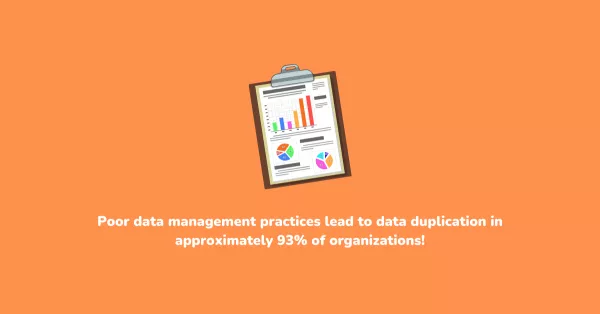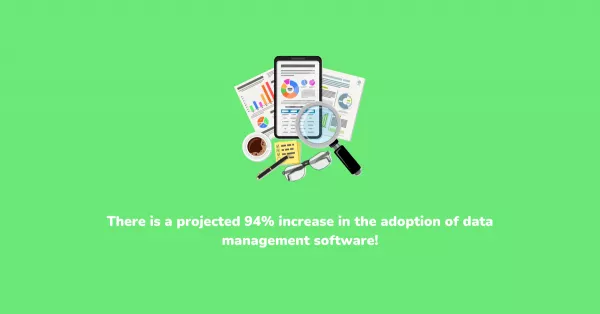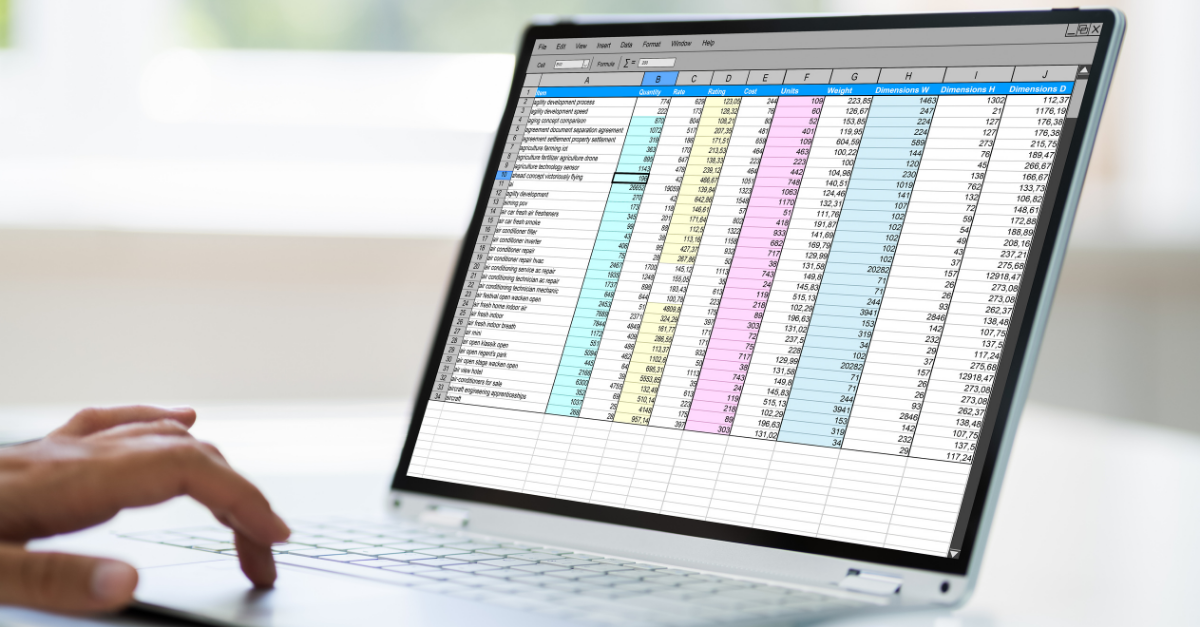Managing employee data effectively is essential for data-driven decisions in HR to streamline their workflow. With the rise of remote work and increased employee mobility, companies need a powerful employee data management software that can handle the complexities of managing and organizing vast amounts of information.
The Importance of Streamlining HR Workflows
Streamlining HR workflows has become a critical necessity for organizations of all sizes. Efficient HR processes not only improve employee productivity and satisfaction but also contribute to the overall success and competitiveness of a company. When HR teams are bogged down by tedious administrative tasks and disorganized employee management, it can have a ripple effect throughout the entire organization, leading to delayed decision-making, reduced operational efficiency, and even compliance issues.
Streamlining HR workflows through the use of employee data management software can bring about a multitude of benefits. By centralizing and automating various HR functions, such as onboarding, payroll, performance management, and compliance tracking, organizations can free up their HR professionals to focus on more strategic initiatives that drive business growth. Moreover, a well-designed employee data management system can enhance data accuracy, improve communication, and foster a more engaged and motivated workforce.
In a world consisting of an increasingly remote and global workforce, the need for a robust and adaptable employee data management solution has become even more pressing. As employees become more mobile and work arrangements become more diverse, HR teams must be able to efficiently manage employee information, track time and attendance, and ensure compliance with relevant labor laws and regulations. By streamlining their HR workflows, organizations can stay agile, responsive, and better equipped to navigate the evolving landscape of the modern workplace.
Common Challenges in HR Data Management

Managing employee data can be a complex and daunting task for HR teams, especially as organizations grow and their workforce becomes more diverse. Some of the most common challenges in HR data management include:
- Data Silos and Fragmentation - Many organizations still rely on a patchwork of disparate systems, spreadsheets, and manual processes to manage employee data, leading to information silos and making it difficult to obtain a comprehensive view of the workforce.
- Inaccurate and Outdated Data - Without a centralized and streamlined data management system, HR teams often struggle to maintain accurate and up-to-date employee information, which can have serious implications for payroll, compliance, and strategic decision-making.
- Compliance and Data Security Concerns - As data privacy regulations become more stringent, HR teams must ensure that employee data is stored securely and accessed only by authorized personnel. Failure to comply with these regulations can result in hefty fines and reputational damage.
- Inefficient and Time-Consuming Processes - Manual data entry, paper-based forms, and outdated systems can lead to significant time and resource wastage, preventing HR professionals from focusing on more strategic priorities.
- Lack of Data-Driven Insights - Without a robust employee data management system, HR teams may struggle to extract meaningful insights from their workforce data, limiting their ability to make informed decisions and drive organizational performance.
These challenges can have a significant impact on an organization's overall efficiency, employee satisfaction, and competitive advantage. By addressing these issues through the implementation of a comprehensive employee data management software, HR teams can streamline their workflows, improve data accuracy, and unlock the full potential of their workforce.
Features and Benefits of Employee Data Management Software
Employee data management system is designed to address the common challenges faced by HR teams in managing and organizing vast amounts of employee information. These powerful solutions offer a range of features and benefits that can help organizations streamline their HR workflows and unlock new levels of efficiency and productivity.
- Centralized Data Management - Employee database software provides a single, secure platform for storing and managing all employee-related information, including personal details, employment history, performance reviews, and training records. This centralization eliminates data silos and ensures that HR teams have a comprehensive and up-to-date view of their workforce.
- Automated Data Entry and Updates - Many employee data management solutions offer features that automate data entry and updates, reducing the risk of manual errors and saving HR teams valuable time. Employees can self-update their personal information, while HR professionals can easily manage changes in employment status, job roles, and compensation.
- Intuitive User Interface - Well-designed employee database software typically features an intuitive and user-friendly interface, making it easy for HR teams and employees to navigate and access the information they need. This can significantly improve user adoption and overall satisfaction with the system.
- Compliance and Data Security - Robust employee database software incorporates advanced security features, such as role-based access controls, data encryption, and audit trails, to ensure the confidentiality and integrity of employee data. This helps organizations comply with relevant data protection regulations and mitigate the risk of data breaches.
- Reporting and Analytics - Employee database software often includes powerful reporting and analytics capabilities, allowing HR teams to generate customized reports, track key performance indicators, and gain valuable insights into their workforce. These insights can inform strategic decision-making and drive organizational performance.
- Seamless Integration - Many employee data management solutions are designed to integrate with other HR systems, such as payroll, time and attendance, and performance management software. This integration enables a more holistic and streamlined approach to HR management, reducing the need for manual data transfer and ensuring data consistency across different systems.
By leveraging these features and benefits, organizations can streamline their HR workflows, improve data accuracy, enhance employee engagement, and ultimately drive business success. As the workforce and workplace landscape continues to evolve, robust employee database software can be a game-changer for HR teams seeking to stay ahead of the curve.
How to Choose the Right Software for Your Company
Selecting the right HR database software for your organization can be a daunting task, as there are numerous options available in the market, each with its own set of features and capabilities. To ensure that you choose a solution that aligns with your specific needs and challenges, it's important to follow a structured evaluation process. Here are some key considerations to keep in mind:
- Assess Your Current HR Workflows and Pain Points - Start by conducting a thorough analysis of your existing HR processes and the challenges your team faces in managing employee data. Identify the specific areas that need the most improvement, such as onboarding, payroll management, performance tracking, or compliance reporting.
- Define Your Requirements and Priorities - Based on your assessment, create a comprehensive list of must-have features and functionalities that your HR database software should possess. This could include integration capabilities, reporting and analytics tools, mobile accessibility, and user-friendly interfaces, among other requirements.
- Evaluate Vendor Capabilities and Product Features - Research and compare different HR database software providers, evaluating their product offerings, features, and capabilities. Pay close attention to the level of customization, scalability, and support they can provide to ensure that the solution can grow with your organization.
- Consider the User Experience - Assess the overall user experience of the software, including its navigation, ease of use, and accessibility. Ensure that the solution is intuitive and user-friendly, as this can significantly impact employee adoption and satisfaction.
- Prioritize Data Security and Compliance - Given the sensitive nature of employee data, it's crucial to choose a solution that offers robust data security features, such as encryption, access controls, and audit trails. Ensure that the software is compliant with relevant data protection regulations in your industry and region.
- Assess the Vendor's Reputation and Support - Investigate the vendor's track record, customer reviews, and industry reputation to ensure that they are a reliable and trustworthy partner. Additionally, evaluate the quality and responsiveness of their customer support, as this can be crucial in the event of any issues or questions.
- Consider the Total Cost of Ownership - Analyze the overall cost of the HR database software, including licensing fees, implementation costs, and ongoing maintenance and support. Ensure that the solution aligns with your budget and provides a strong return on investment.
By following these steps, you can identify the HR database software that best fits your organization's unique needs and requirements, ultimately helping you streamline your HR workflows and unlock the full potential of your workforce.
Implementing Data Management Software in Your HR Department
Implementing staff database software in your HR department can be a transformative process, but it requires careful planning and execution to ensure a successful deployment. Here are the key steps to consider when implementing an employee data management solution in your organization:
- Secure Buy-In From Stakeholders - Gain the support and buy-in of key stakeholders, including senior management and IT teams, to ensure that the implementation process has the necessary resources, budget, and organizational alignment.
- Assemble a Cross-Functional Implementation Team - Bring together a diverse team of HR professionals, IT specialists, and change management experts to oversee the implementation process. This team will be responsible for defining the project scope, setting timelines, and managing the rollout.
- Conduct a Comprehensive Data Audit - Thoroughly assess the current state of your employee data, including its accuracy, completeness, and organization. This will help you identify any data cleanup or migration requirements that need to be addressed before the new software is implemented.
- Customize the Software to Your Needs - Work closely with the software vendor to customize the employee data management solution to your specific needs and workflows. This may include configuring user roles, permissions, and reporting capabilities, as well as integrating the software with your existing HR systems.
- Develop a Comprehensive Training Plan - Invest in comprehensive training for your HR team and other relevant employees to ensure that they are comfortable navigating and utilizing the new software. This may include in-person training sessions, online tutorials, and ongoing support resources.
- Communicate the Change Effectively - Develop a clear and transparent communication plan to inform employees about the new employee data management system, its benefits, and any changes to their existing HR processes. Encourage feedback and address any concerns or questions that may arise during the transition.
- Establish a Robust Data Governance Framework - Implement a data governance framework that outlines the policies, procedures, and responsibilities for managing and maintaining employee data. This will help ensure data accuracy, security, and compliance throughout the organization.
- Monitor and Continuously Improve - Regularly monitor the performance and adoption of the staff database software, and be prepared to make adjustments or enhancements as needed. Collect feedback from users and continuously optimize the system to ensure that it remains aligned with your evolving business needs.
By following these steps, your HR department can successfully implement an staff database software solution that streamlines workflows, enhances data accuracy, and empowers your workforce to achieve greater productivity and success.
Best Practices for Using Employee Database Management System Effectively

Effective utilization of staff databse software is crucial for unlocking its full potential and achieving the desired benefits. Here are some best practices to consider when using an employee data management solution in your organization
Establish Clear Data Governance Policies
Develop and enforce comprehensive data governance policies that outline the rules, responsibilities, and procedures for managing employee data. This includes defining data access permissions, data backup and recovery protocols, and data retention schedules.
Ensure Data Accuracy and Integrity
Implement robust data validation and verification processes to maintain the accuracy and integrity of employee data. Encourage employees to regularly update their personal information and provide clear guidelines for data entry and updates.
Leverage Data Analytics and Reporting
Utilize the reporting and analytics capabilities of your staff database software to gain valuable insights into your workforce. Regularly generate reports on key performance indicators, such as employee turnover, training completion rates, and compensation trends, to inform strategic decision-making.
Promote User Adoption and Engagement
Foster a culture of user adoption and engagement by providing comprehensive training and support resources for both HR professionals and employees. Encourage feedback and actively address any concerns or challenges users may face with the software.
Continuously Optimize and Enhance the System
Regularly review the performance and functionality of your employee database management system, and be prepared to make updates or enhancements as needed. Seek feedback from users and stay informed about industry trends and best practices to ensure that your solution remains aligned with your evolving business requirements.
Integrate with Other HR Systems
Leverage the integration capabilities of your employee database management system to seamlessly connect it with other HR systems, such as payroll, time and attendance, and performance management. This can help streamline workflows, improve data consistency, and enhance the overall efficiency of your HR operations.
Prioritize Data Security and Compliance
Ensure that your employee database management system meets the highest standards of data security and compliance. Regularly review and update your data protection measures, such as access controls, encryption, and backup procedures, to mitigate the risk of data breaches and ensure compliance with relevant regulations.
Provide Ongoing Training and Support
Invest in continuous training and support for your HR team and other employees who use the employee database management system. This can include regular refresher sessions, online resources, and dedicated support channels to help users navigate the system and leverage its full capabilities.
By following these best practices, your organization can maximize the benefits of your employee data management system, streamline HR workflows, and foster a more engaged, productive, and compliant workforce.
Why OrangeHRM?
Want to manage your workforce more efficiently? This is where OrangeHRM, the leading provider of HR solutions, comes in. OrangeHRM's innovative human resource management software is designed to simplify and automate HR processes, allowing HR professionals to focus on strategic initiatives rather than getting bogged down by administrative tasks. By centralizing employee data in a user-friendly and secure platform, OrangeHRM enables HR teams to easily access and update employee information, track performance, conduct training, onboard and offborad employees, and generate insightful reports. With its intuitive interface and robust features, OrangeHRM's human resource management software ensures data accuracy, reduces manual errors, and promotes compliance with data protection regulations. Whether you have a small or large workforce, OrangeHRM's solution is customizable to meet your specific needs. Say goodbye to spreadsheets and outdated systems, streamline your HR workflow with OrangeHRM and unlock the full potential of your employee data management. Book your FREE demo today!
